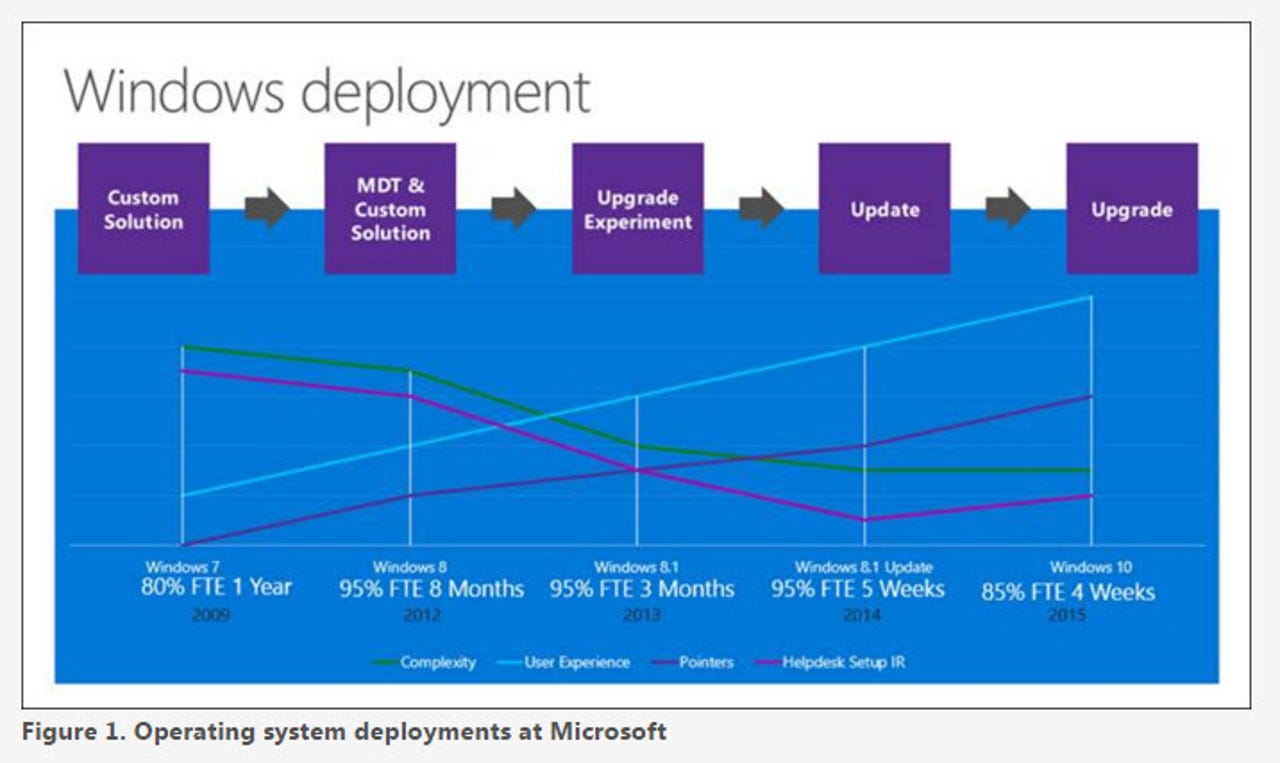How Microsoft deployed Windows 10 inside the company

Unsurprisingly, Microsoft has learned a thing or two about deploying new versions of Windows inside the company over the years.

tech pro research
By doing an in-place upgrade, Microsoft's IT department deployed Windows 10 to 85 percent of the company's employees within four weeks of its release, and by 95 percent within 10 weeks -- a week ahead of IT's goal.
"The Windows 10 deployment was the fastest company-wide operating system deployment Microsoft IT has ever seen. In-place upgrade deployment using OSD was the key technology that enabled this successful deployment." (OSD. or Operating System Deployment, is a feature of System Center 2012 R2 Configuration Manager SP1.)
Those stats are according to a technical case study published by the company's IT department earlier this month.
As this is a Microsoft-blessed document, this isn't the place to come for a list of gotchas or things that went wrong. However, there are some interesting "lessons learned" and best practices in the case study -- even for smaller (and possibly larger) IT shops that are planning to deploy Windows 10 at some point in the future.
By doing an in-place upgrade, Microsoft avoided having to manage OS images, like the company did when it deployed Windows 7."Microsoft users really didn't have to do anything. Click, click, install and they were up and running," the case study claims, as applications, data and settings were carried over through the migration.
Because Microsoft scheduled mandatory updates to happen during times that most computers at the company would be connected to the corporate network (such as Tuesdays at noon lunch), there was less impact on the help desk, reducing support costs by roughly 50 percent, the case study claims.
As Windows Insider testers know, Microsoft has been flighting Windows 10 builds inside the company, too, as part of its Windows 10 development/deployment process. The case study notes that Microsoft IT created an early adopter community to test these early builds.
Inside the company, there are currently a select number of employees on the Canary ring, getting daily builds; the Operating System Group ring (running builds validated by the Canary Ring) and then the broader Microsoft ring (running builds validated by the Operating System Group ring). Prior to Windows 10's initial release in July, there were already 38,000 users, or 40 percent of the company's employees running Windows 10, the case study notes.
"Most" of the computers at Microsoft were running Windows 8.1 before the early adoption phase of Windows 10, though as a result of "a recent Microsoft acquisition" (I believe, after watching this Windows 10 deployment video, a reference to the Nokia handset business), there were hundreds of line-of-business apps that were developed to run on Windows 7 as part of the mix, too.
Even though this case study is written at a fairly high level, it's still good reading -- and includes some possibly useful resources at the end -- for those businesses planning their Windows 10 move.
I'd be interested to see Microsoft IT do a similar case study that shows how well (or not) the company's branching strategy for Windows 10 updates ends up working inside the company, too....